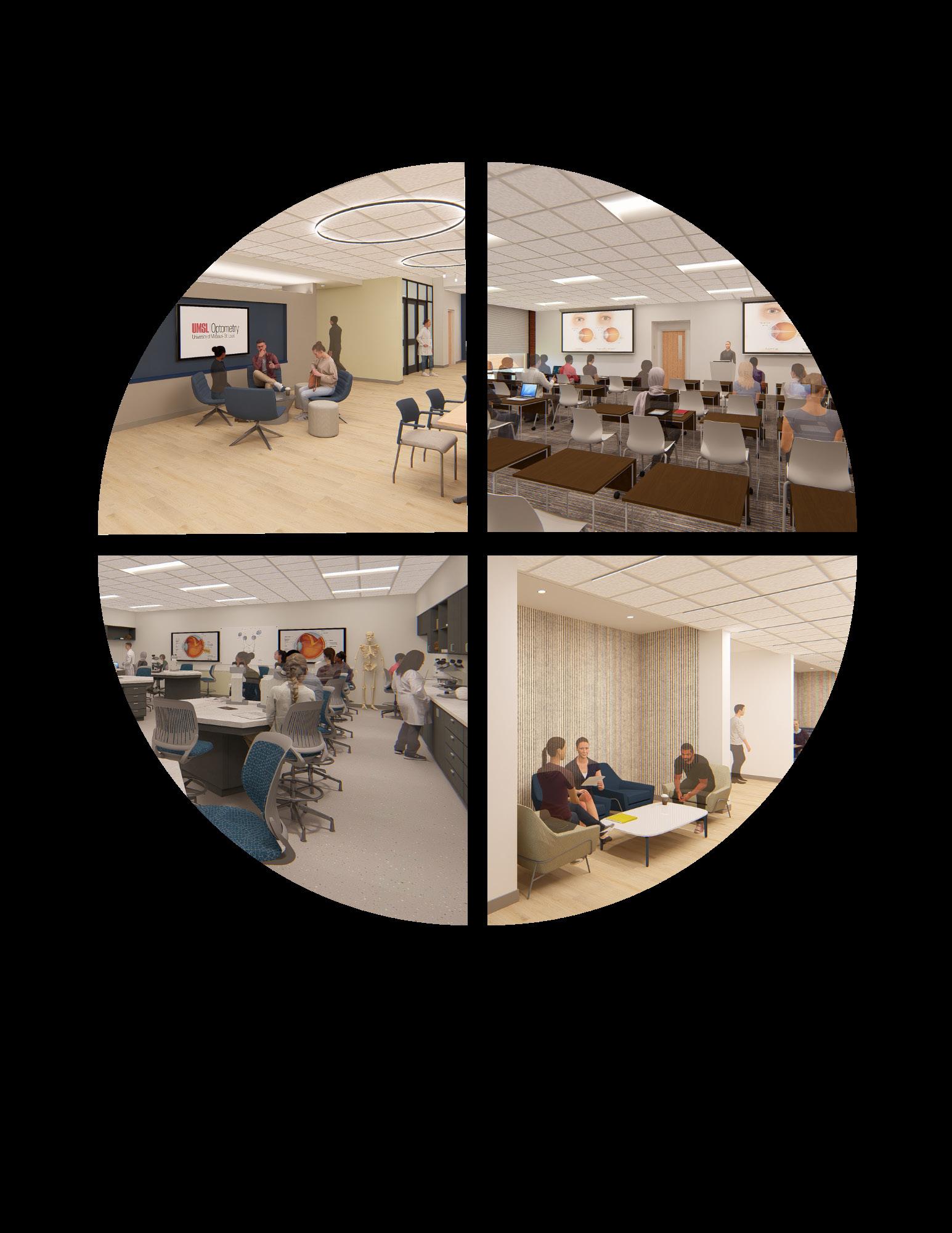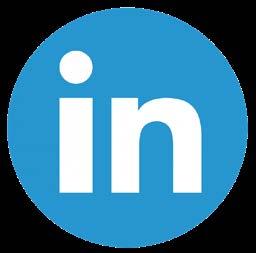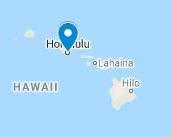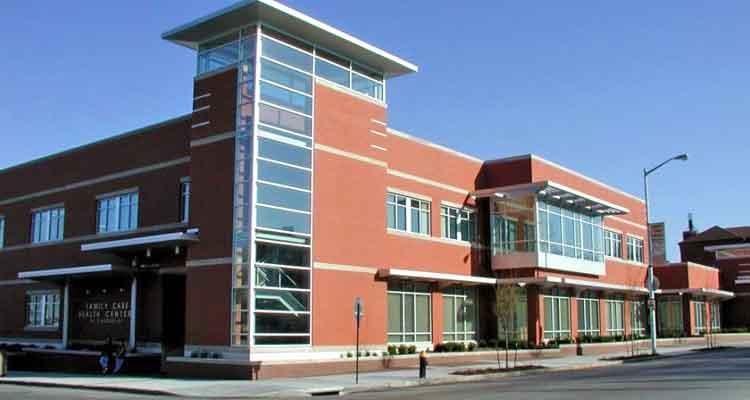




Greetings,
Thanks for your interest in UMSL Optometry! When students are asked why they chose to attend UMSL Optometry, you will hear comments similar to, “It is like a home away from home” or “UMSL has a family feel.” The feeling of belonging and being more than just a student resonates throughout our program. As one of the smaller optometry schools, we strive to make sure every student, faculty, and staff member feels like they are part of the family
UMSL Optometry provides our students with a well-rounded education with faculty members who want to teach and are professionals in the field. Our students have ongoing support from committed staff members who are always ready to help. The goal at UMSL Optometry is to provide every student with a solid educational background and diverse patient experience. Your time in the program focuses on making sure you are ready to provide quality eye care to patients after you graduate.
We would love to see you at one of our upcoming events. Please see our webpage for more information.
UMSL Optometry. Welcome Home.

Angel Novel Simmons, O.D., F.A.A.O. Associate Dean of Student Services and Alumni Relations
College of Optometry
University of Missouri St. Louis One University Boulevard St. Louis, MO 63121-4400
novela@umsl.edu
(314)516-5995 (office) (314)516-6705 (fax)
Please scan the QR code to learn more about our program.

The mission of the College of Optometry is to promote and provide improved eye and health care for people throughout the country by preparing the next generation of optometrists and vision researchers. To accomplish our mission the faculty, staff, and students will pursue excellence within our professional, graduate, residency, and patient care programs.
Optometrists, as essential primary eye care providers within an effective health care delivery system, frequently serve as leaders within the community. It is our commitment to demonstrate and instill an appreciation for the following values as we prepare our graduates to fulfill that role with distinction.
Growth–We are committed to creating evidence-based quality educational experiences and engendering a passion for lifelong learning within our students, staff, faculty, and alumni. Individual and collective discipline and perseverance are required for growth. Growth is an essential component of our commitment to make a positive impact upon the community that we serve.
Responsibility–We are committed to the pursuit of excellence, charity and compassion towards others, and to improved quality of life for those who live and work within our community. The fulfillment of that obligation is enabled by dedication to personal and academic integrity.
Discovery–We are committed to the development and utilization of innovative approaches to maximize learning and improve patient care through research, scholarship and teaching. The pursuit and dissemination of new knowledge fulfills our responsibility to enhance the delivery of eye care and quality of life for our fellow citizens.
Community–We are committed to supportive and productive relationships within our college, campus, professional and surrounding communities. We have an appreciation for the dignity of others and respect for the diversity that exists within our community. Teamwork and collaboration are essential as we strive to enrich the lives of our fellow citizens.
Dean’s Suite 331 Marillac Hall 314-516-5606
Dr. Keshia Elder Dean and Clinical Professor elderk@umsystem.edu
Amy Ficklen 314-516-5606 Executive Assistant to the Dean and Continuing Education Coordinator aficklen@umsl.edu
Student Services 317 Marillac Hall 314-516-6263 optometry@umsystem.edu
Dr. Angel Simmons 314-516-5995
Associate Dean of Student Services and Alumni Relations novela@umsystem.edu
Aric Hamilton 314-516-4543
Director of Student Services and Alumni Relations awhbmd@umsystem.edu
Linda Stein 314-516-5905 Student Services Coordinator steinli@umsystem.edu
Financial Aid
Kaje Sanford 314-516-4902 Assistant Director, Student Financial Aid sanfordke@umsystem.edu
Dr. Linda Du 314-516-5278 Director of Fourth Year Clinical Rotations nguyenlt@umsl.edu
Erin Schaeffer 314-516-5615 Senior Educational Program Coordinator Schaeffere@umsystem.edu
Associate Dean of Clinical Operations
Dr. Vinita Henry 314-516-6532 henryvi@umsystem.edu
Assciate Dean of Academic Programs and Residencies
Dr. Julie DeKinder 314-516-6534 dekinderj@umsystem.edu
Director of Research
Dr. Carl Bassi 314-516-6029 bassic@umsystem.edu
UMSL Global 314-516-5753
University Health Services 314-516-5671
Police Department 314-516-5155 direct line
College of Optometry Mailing Address
UMSL / Optometry
Student Services / 317 Marillac Hall One University Blvd. St. Louis MO 63121
Email: Optometry@umsystem.edu Phone: 314-516-6263 Fax: 314-516-6708
The College of Arts & Sciences and the College of Optometry have a partnership that allows students to receive a bachelor’s degree after the first year as an optometry student. This program does not guarantee acceptance. Below are the requirements to receive the degree.
Application Timeline: The traditional timeline for applying to optometry school has a student taking the Optometry Admissions Test (OAT) and applying after their junior year. Students in this program should expect to take the OAT and apply after their sophomore year.
Credit Load: Students must have completed 90 credit hours in order to start the optometry program. In order to do this, a student must take 15 credit hours per semester during their undergraduate studies.
General Education: All general education CORE and EXPLORE requirements in addition to Junior Level Writing and Cultural Diversity courses must be completed in order to receive a bachelor ’s degree at UMSL.
Degree Selection: Typically, any degree can be considered pre-health. Due to the accelerated nature of the program, students hoping to pursue this path should meet with the pre-professional advisor as soon as possible to make sure they will be able to satisfy major requirements in addition to the classes required for acceptance to the College of Optometry.
Residency Requirement: Transfer students hoping to take advantage of this program need to have taken at least 60 undergraduate credit hours at UMSL.
Additional information: Visit the UMSL College of Arts and Sciences webpage at https://www.umsl.edu/divisions/artscience/advising/prehealth/index.html and review the Pre-Optometry section. You may also contact a Pre-Professional Advisor at artscience@umsl.edu or 314-516-5501.
We have compiled a list of links that you may find helpful as a prospective student for the UMSL College of Optometry.
● UMSL College of Optometry home page optometry.umsl.edu
● The Bulletin contains course descriptions, courses by year, information on faculty, and policies and procedures of the University.
www.umsl.edu/bulletin
● Accreditation for UMSL www.umsl.edu/services/academic/accreditation/index.html
● Accreditation for the College of Optometry https://tinyurl.com/UMSLaccreditation
● Association of Schools and Colleges of Optometry www.opted.org
● Read about the profession of optometry at the American Optometric Association (AOA) website. www.aoa.org
● TouchNET is the online payment portal for UMSL seat deposit.
https://tinyurl.com/UMSLtouchnet





The application cycle begins at the end of June for each entering class. Applicants are encouraged to apply as soon as possible after the OptomCAS opening date.
When is the application deadline?
The College of Optometry must receive all application materials and application fees no later than March 1st. Those students wishing to be considered for a merit- based scholarship should have all application materials in our office no later than January 15th.
How will I know that the school has received my application?
You will receive updates from the Centralized Application Service (OptomCAS) regarding general application materials. The university sends an automated response for your supplemental application and a separate one following payment of your supplemental application fee. Once we have your completed file we will notify you.
When should I take the Optometry Admission Test (OAT)?
Typically, students should plan to take the exam during the summer between the third and fourth year of their undergraduate program. Students who are part of a 3+4 program should plan to take the exam during the summer between the second and third year of their undergraduate program. Students are typically most successful if they have completed biology, general chemistry, organic chemistry, and physics prior to taking the OAT exam.
Does UMSL Optometry accept other entrance exams?
Yes, we also accept the MCAT, DAT and GRE test for consideration.
Does the College of Optometry accept faxed application materials?
The College of Optometry does not accept faxed application material.
Where can I obtain OAT information?
OAT general information can be found at: https://oat.ada.org
I requested my OAT scores to be sent to the college; however the OPTOMCAS has not received the scores. What should I do?
Contact the OAT program to have your scores released to the college. There will be an additional charge if you did not make the request on your original OAT application form. Online requests for additional copies of score reports may be requested at https://oat.ada.org
Do OAT scores expire?
Yes, we do not accept scores older than three years old.
How do I know if I should repeat the OAT?
Candidates who score at least 320 overall and at least 300 on each section receive the most favorable consideration.
Does the UMSL College of Optometry require a bachelor’s degree prior to matriculation?
The college does not require a bachelor’s degree; however, the Admissions Committee gives preference to applications that will have a bachelor’s degree prior to matriculation.
Which biology, chemistry, and physics courses should I take to satisfy the admission requirements?
The college does not specify a course title. It is recommended that applicants work closely with their undergraduate advisor when selecting courses.
Which statistics course should I take to satisfy the admission requirements?
The College does not specify a course title. Most applicants satisfy the requirement by completing a statistics course in math, business, or psychology.
I have not completed all prerequisite courses; will my application still be considered?
Most applicants are enrolled in prerequisite courses at the same time the admissions committee is reviewing their file. All prerequisite courses must be completed at the time of matriculation, not at the time of application.
Does the college provide a form for the letters of recommendation?
No, the OptomCAS Centralized Application will provide a form for the letters of recommendation. The letter of recommendation will require the completion of two parts, Part I, a rating of attributes, and Part II, the letter.
Whom should I have write a letter of recommendation?
The College of Optometry requires three letters of recommendation to be considered complete. We require one letter be from an optometrist for whom you have worked or shadowed. College instructors, academic advisors, and/or employers may write the remaining letters. If your university uses a committee process to provide a letter, we will accept the letter as an equivalent to three letters as long as it contains an optometrist recommendation. Applicants are not permitted to submit letters of recommendation from family members
How often are applications reviewed?
Applicant files are reviewed daily.
When does the interview process begin and how often does the college interview applicants?
Typically, interviews begin as early as August and extend into March or until the class is filled. The college interviews 4-8 applicants per day, two days per week.
When and how will I find out if I will be invited for an interview?
Applicants are selected for interview after all requirements for the application process have been met, including a verified OptomCAS application, three letters of recommendation, OAT or other acceptable test scores, supplemental application, and application fees. Applicants who meet the college’s application criteria will be contacted via the email address provided in the OptomCAS application.
Information about UMSL and the optometry program including financial aid and housing is discussed during the information session. You will meet with a recruitment advisor to review your file. Student ambassadors will take you to lunch and provide a tour of the campus while answering any questions you have about the program. Finally, you will have a personal interview with at least two members of the admissions committee.
UMSL College of Optometry evaluates the whole student during the admission process. Competitive undergraduate GPAs, OAT and other acceptable admission exams are only two of the factors we use to decide if a candidate is a good fit for our program. UMSL Optometry will also consider official test scores from the Medical College Admission Test (MCAT), Dental Admission Test (DAT) and the Graduate Records Exam (GRE). The Admisisons Committee also considers the progression of academic success, extracurricular activities, leadership and community involvement, communication and interpersonal skills, letters of recommendation, essay, personal interview, and commitment to the profession.
Strongly Recommended Courses:
• Anatomy & Physiology
• Biochemistry
• Cell Biology
• Neurosciences
• Histology
• Immunology
• Business Courses
Advanced Placement (AP), International Baccalaureate (IB), and/or College-Level Examination Program (CLEP) Credit is acceptable if the credits were accepted by your undergraduate institution and appear on your undergraduate transcript. We will accept prerequisite courses taken online provided they were offered by an accredited college or university. In-person laboratories are strongly preferred. The course name must appear on your transcript with the transfer credits. If not, you will have to contact https://www.collegeboard.org to request your AP scores and have those sent to UMSL Admissions.
An unlimited number of dual credit courses are accepted by the University. In order for these courses to be accepted, the course name and letter grade must appear on a transcript from a regionally accredited institution. The transcript should be sent to OptomCAS.
All course requirements must be taken from a regionally accredited institution and must be taken for a letter grade (C- or higher). We do not accept coursework that was taken as pass/fail* or audit.
Students must complete 90 semester hours or 135 quarter hours prior to matriculation.
Our students come from a variety of undergraduate backgrounds such as biological sciences, chemistry, psychology, education, business, and engineering.
*Due to COVID-19 if a course was changed to pass/fail because of campus closures then the College of Optometry will accept a P/F grade. If the student elected to take the P/F grade instead of earning a grade, the P/F grade will not be considered. Additional documentation may be required.
Email: Optometry@umsystem.edu
Phone: 314-516-6263
Fax: 314-516-6708
1. SMALL CLASS SIZE: Schools and Colleges of Optometry vary from 26–150 students per class. We admit around 46-50 students, giving UMSL one of the smallest class sizes in the country. Our labs are generally reduced to half the class size per lab session, and our student-to-faculty ratio is 8:1.
2. CLINICAL EXPERIENCE: The pre-clinic sequence begins fall semester of first year where students primarily learn foundational material and basic clinical procedures. This allows students the opportunity to gain practical experience in performing eye exams as early in the curriculum as possible. Students earn their white coat at the end of their second year and will begin seeing patients in one of our three clinics during the summer semester. One of UMSL Optometry’s greatest strengths is the fourth year clinical externship program, which consists of 8-16 week rotations selected from our more than 65 active, nation-wide externship sites. Each of these unique opportunities allows students to gain expertise in areas such as contact lenses, pediatrics, ocular disease, low vision, and primary eye care.
3. FOCUSED LEARNING: Faculty are focused on student success. Lab sections are reduced in size to provide a more personal learning experience. Tutoring is available for every student at no additional cost. Counseling services are also available on North Campus for student convenience.
4. CAMPUS SAFETY: The University of Missouri-St. Louis remains one of the safest campuses among all colleges and universities in the Missouri. The university has dedicated campus police who are required to spend at least 70% of their shift patrolling the campus and walking the buildings. The University of Missouri-St. Louis Police Department is the 18th university in the country and the 5th Land Grant Institution Police Department to achieve The Commission on Accreditation for Law Enforcement Agencies (CALEA) first credentialing program: the Law Enforcement Accreditation Program. Students are encouraged to download the Guardian app for individualized safety, which allows students to contact the police with the touch of a button and has updates on any suspicious activity on or near campus. UMSL also has emergency phones strategically placed across campus for use and officers who provide self-defense classes or escort services. Campus police can always be reached at 314-516-5155.
5. HOUSING: St. Louis has one of the lowest costs of living with an average monthly rent of $1,300. Many students choose to live at the University Meadows, which is an on-campus apartment complex located directly behind the College of Optometry. There are many different areas within 20 minutes of campus that students frequently choose to live including: University City, Clayton, Maplewood, Central West End, Olivette, Creve Coeur, St. Charles, and parts of Downtown St. Louis.
6. FACULTY/STAFF: The faculty at UMSL are distinguished authors and teachers who are focused on students. Their core mission is to ensure that optometry students receive a quality education and are prepared to care for patients. Our professors are committed to the mission and vision of the college and are readily available to meet with students as needed. Many of them are actively involved in research, which students can assist with as part of the Optometry Scholars Program. We also have a fantastic staff who are always available to support our students.
7. STUDENT INVOLVEMENT: Students remain very active in many organizations, and they hold local and national leadership positions. Our students also participate in national optometric competitions.
• AOSA (American Optometric Student Association)
• MOSA (Missouri Optometric Student Association)
• SVOSH (Student Volunteer Optometric Services to Humanity)
• AAO (Student chapter of the American Academy of Optometry)
• NOSA (National Optometric Student Association)
8. OFF-CAMPUS RESOURCES: If you are doing a research project while attending UMSL, students have access to additional libraries in the St. Louis area. Students have access to the Thomas Jefferson Library on North Campus as well as to Washington University and St. Louis University School of Medicine libraries. Additionally, the national headquarters of the American Optometric Association (AOA) is located in St. Louis. Students have access to the Archives of the American Optometric Association, which is located approximately 12 miles from UMSL.
9. COMMUNITY FOCUSED: UMSL Optometry is dedicated to serving the community. Our clinical faculty and students provide eyecare through conducting school vision screenings, engaging in humanitarian efforts, and partnering with Federally Qualified Healthcare Centers. .
10. PARKING AND TRANSPORTATION: Most students have their own vehicle to get to and from campus, and parking is included in tuition. Marillac Hall has its own parking lot in front of the building. UMSL students can obtain a Metro Pass for only $25 during the semesters in which they are currently enrolled, allowing them to ride the MetroLink and the Metro Buses. MetroLink is our light rail system with stops on both North and South Campus.
11. FITNESS AND INTRAMURAL SPORTS: The Recreation and Wellness Center on North Campus includes an indoor pool, track, exercise equipment, weights, and an indoor climbing wall. The recreation center offers classes to students free of charge. Optometry has the most participation in intramural sports of any other group on campus, so come join in on the fun.
12. MARILLAC HALL: Over the past few years, the college has renovated Marillac Hall by adding new study spaces aimed to enhance the student experience. These spaces are protected by swipecard access that is only given to Optometry students. The Focal Point was renovated to provide an area for students to eat lunch and relax between classes. In 2026, UMSL Optometry will move to a newly renovated space.
13. OUR CLINICS: The Patient Care Center opened in 2016 and offers 30 exam lanes, conference rooms, research areas, and fullservice dispensary. The College of Optometry also owns and operates two additional clinics in the Central West End and East St. Louis. Our students’ clinical experiences allow them to care for a diverse patient population. Students’ pre-clinical training takes place on the second floor of the Patient Care Center. This space includes two pre-clinic classrooms, 30 pre-clinic exam lanes, two laboratory classrooms, student lockers, study spaces, common spaces and a boards study exam lane.
14. RESEARCH PROGRAM: Dr. Carl Bassi is the director of research for UMSL Optometry. He and other faculty have wide-ranging research interests. Dr. Bassi’s recent work led to a golf ball that helps players line up putts more accurately by adding three parallel lines to the ball. Students who are interested in research can become part of the Optometry Scholars Program that is designed to pair students with faculty who are currently completing research. Many students who have participated in this paid program go on to present posters and lectures, and have been published in peer-reviewed journals
15. MILITARY FRIENDLY AND MILITARY SCHOLARSHIPS: We are military friendly with several students receiving highly competitive military scholarships. We proudly welcome active duty reserve and veterans into our program. The campus also has a Veterans Center on North Campus which is available to all active duty and veterans of the armed services. UMSL College of Optometry also accepts all military aid to cover the cost of tuition and fees.
16. SCHOLARSHIPS: UMSL Optometry awards students over $100,000 each year in scholarship money, including merit scholarships, the Kansas reciprocal agreement, endowed scholarships, and external scholarships. Travel grants to national meetings are often available to students, which include Optometry’s Meeting and the American Academy of Optometry.
17. CAMPUS RESOURCES: The Millennium Student Center on North Campus houses many university services including the Bookstore, Cashier’s Office, Registrar’s Office, Health and Counseling Services, Food Court, US Bank, Technology Support Center, and meeting rooms.
18. FAMILY FEEL: With the small class sizes and caring faculty and staff, UMSL Optometry has a true family feel to it. The faculty and staff will get to know you on a personal level. We can’t wait to have you join our “family.”
*Tuition rates are determined each year in May by the Board of Curators at the University of Missouri.This rate can change from year to year. *The additional costs are estimates and to be used for budgeting purposes only.
To apply for federal student aid you must complete the Free Application for Student Aid (FAFSA). You will need your federal student PIN number and a copy of last year’s federal taxes. The federal government has established a new website where federal financial aid information is located including: FAFSA, loan counseling, financial aid history, interest rates, PIN site, and where you can apply for Grad PLUS loans at: https://studentaid.gov
The College of Optometry offers a variety of scholarships to students. These scholarships vary in amount and criteria. Visit the below link and search optometry for available scholarships: umsl.academicworks.com
Grad PLUS loans are credit-based loans with variable interest rates. Grad PLUS loans are used to supplement funding for education and living expenses or used by students who have maxed out on unsubsidized loans. To learn more about graduate plus loans visit: https://studentaid.gov/understand-aid/types/loans/plus/grad
Loans that are able to be taken out by a student from a third-party vendor. These are credit-based and have variable interest rates.
Federal Work study is available to qualified optometry students each semester. This includes students working as TA’s, tutors, or ambassadors.
There are scholarships available through the Army, Navy, and Air Force. They are competitive; in the past, UMSL students have been successful at securing the scholarships.
The Health Profession Student Loan program (HPSL) is administered by the Department of Health and Human Services. All students who apply for this loan must have completed the Free Application for Federal Student Aid (FAFSA). The amount awarded will be determined by the number of applications and fund availability. The interest rate on the HPSL is 5%. The borrower will not be responsible for any interest until the start of the repayment period. A one year grace period follows completion or termination of full time status.
Other
529C Self-Pay Employer Trust Funds


In addition to the patient care experiences available through the Patient Care Center, Lindell Eye Center, the East St. Louis Center, and its affiliated clinics, the College of Optometry also has a diverse Externship Program. This program allows fourth-year students to spend a portion of their final year of training in a variety of patient care environments (i.e., military bases, Veterans Administration Hospitals, Indian Health Services Hospitals, various specialty practices and private practices). These five rotations allow you to learn from different doctors in various practice settings.
• Adult Comprehensive Eye Care
• Pediatrics/Vision Training
• Contact Lenses
• Eye Health Management
• Retinal Photography
• Low Vision Rehabilitation
• Corneal Topography
• Electrodiagnosis
• Adult Comprehensive Eye Care
• Pediatrics/Vision Training
• Contact Lenses
• Eye Health Management
• Retinal Photography
• Low Vision Rehabilitation


• Adult Comprehensive Eye Care
• Pediatrics/Vision Training
• Contact Lenses
• Eye Health Management
• Retinal Photography

Family Care Health Center
Carondelet 401 Holly Hills Avenue
St. Louis, MO 63111
Phone: 314-353-5190

(Formerly Grace Hill)
Murphy-O’Fallon Health Center 1717 Biddle Street St. Louis MO 63106
Phone: 314-814-8585
